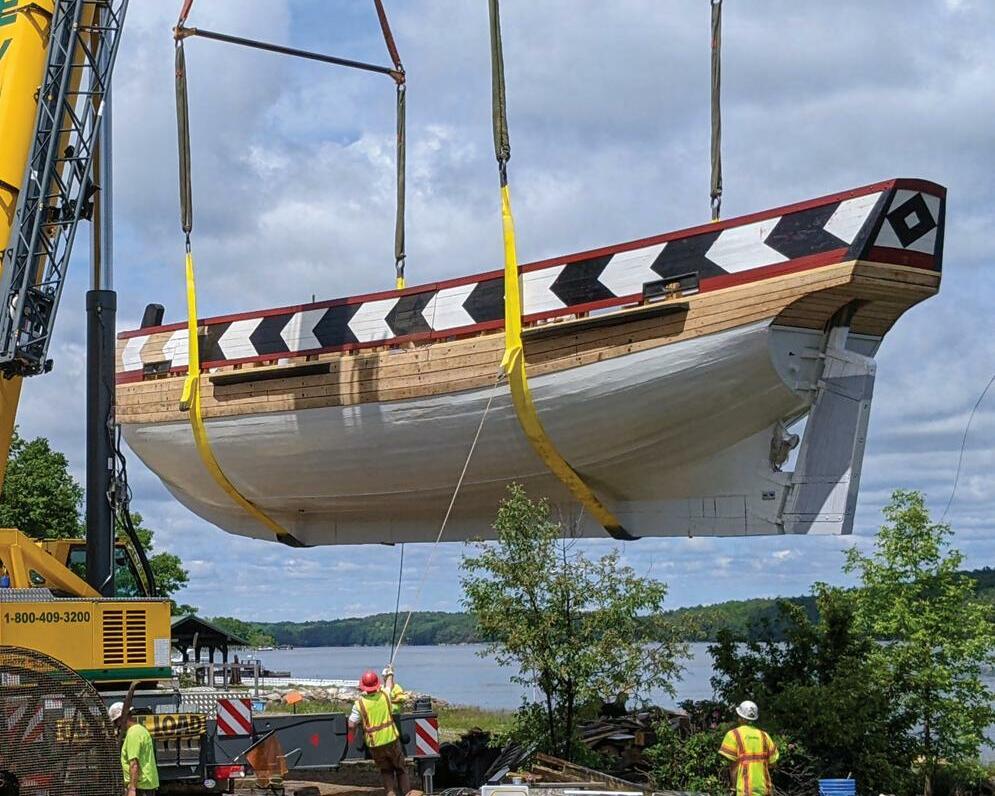
17 minute read
At Last!
More than two decades after the idea was first kicked around, and 11 years after construction began in 2011, Maine’s First Ship has finally launched their pinnace
Over 200 volunteers labored on Virginia, a reconstruction of the first English-built oceangoing ship launched in the Americas. The original was constructed at the Popham Colony, founded in 1607 at the mouth of the Kennebec River, to explore the natural resources of the area and to find the Northwest Passage. When the colony was abandoned a year later, Virginia sailed for England.
Advertisement
The Bath area, ten miles up the river from the colony’s location, later became a major shipbuilding site. The new Virginia was built in downtown Bath, on the banks of the Kennebec, into which she was launched via crane on June 4.
We spoke to MFS board member and lead rigger James L. Nelson the day after the launch.
Marlinspike: It’s been just over 24 hours since Virginia touched down in the Kennebec River. How are you feeling?
James L. Nelson: I’m a happy guy! Yes. I’m a relieved guy...
MS: After all these years, it must have been an amazing moment.
JLN: It was the culmination of a lot of work by a lot of people, right up to Saturday. We planned a huge day of celebration for the launch. So on top of getting the ship ready over the past month, we’ve been flat out, lining up musicians, reenactors, food vendors, speakers, getting the stage ready, getting the AV ready… so it’s been a big production, above and beyond just launching the ship.
MS: The launch itself was pretty intricate. That giant crane had to pick up and move the vessel, what, three times to go from the build site into the river? Talk about setting that up.
JLN: We contracted with Keeley Crane, a local crane company. But the first thing we had to do was dismantle the boatshed in which we built Virginia, that had been standing for a decade. That was no small task. All of the equipment, all of the tools, the saws, all of that had to be moved inside. So the boatshed came down and revealed Virginia to the world for the first time.
Once that was done and the site was cleared away, we brought the crane in and they picked the ship up and they moved it once, northward, along the riverbank. Then they repositioned the crane, picked it up again and moved it further north, to where it was ultimately going to be launched. And then they turned it 180 degrees. The bow had been pointing north; they turned it so the bow was pointing south. That was primarily so that the spectators would be able to see the bow when the bottle was broken.
And then they repositioned the crane again, and we brought a second crane in, because while the first crane could lift the ship easily enough, it couldn’t get that close to the
river bank. Being further from the river bank meant having to tilt the crane arm down at a much steeper angle, and the crane couldn’t hold the ship at that angle. So we actually needed two cranes.
The one advantage of that was that we were able to step the mast using the crane. Otherwise the mast would’ve interfered with the sling and we wouldn’t have been able to put the mast in.
MS: That’s a lot of work! There she was, being built right by the river, but…
JLN: Yes, exactly. We spent a long time, literally years, going back and forth between doing a traditional launch down the ways, doing a side launch, or using a crane. A lot of pros and cons all around, but ultimately we decided the crane was going to be safer. As intricate and involved as that process was, I think it was probably simpler than building ways and launching it. Part of the problem is that there are a lot of old pilings in the river, you know, from the shipyards of years past. All of those would’ve had to be cut away if we were gonna go down the ways. So ultimately this was the most expedient way to put the ship in the water.
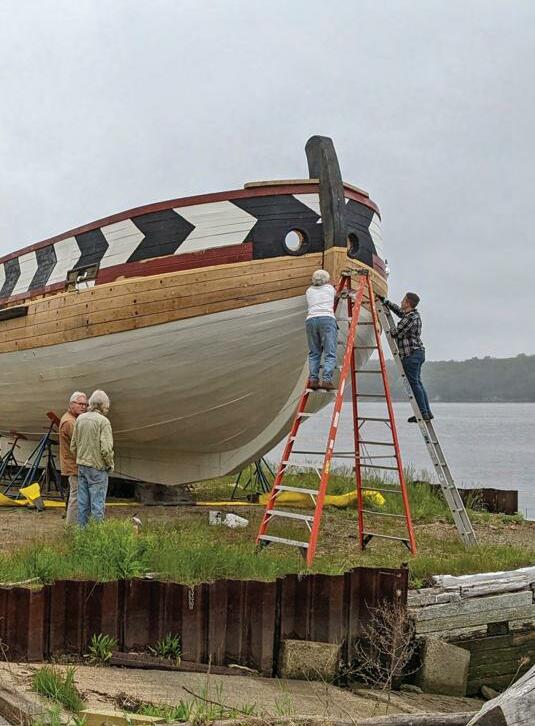
MS: Let’s just take a minute and shout out some of the key figures in the project over the years.
JLN: Absolutely! Orman Hines, of course, has been president of Maine’s First Ship since 2009. He has really been one of the major figures. As you know, he’s not one to put himself in the forefront, but he really has been the steady guiding hand behind a lot of this. He’s just excellent when it comes to keeping everybody happy and on track and being a calming presence.
Along with him, there’s Rob Stevens, our lead shipwright, who has been with the project really from the very beginning, since the design stages. He had been slated to be the shipwright back when the ship was going to be built at the Maine Maritime Museum. Then, when that initial idea folded, Rob was one of the people to step forward and say, look, let’s build this ship anyway! And he was willing to volunteer his time, despite the fact that he makes his living as a shipwright. He was willing to volunteer his time to see this project to fruition. So he was enormously important.
MS: I noticed that one of the knightheads was carved into a bust of Stevens! Was anyone else so honored, Jim?
JLN: Uh, there was, yes! At the mizzen mast is Jeremy Blaiklock, who is the vice president of the organization, and who oversaw vessel construction, really since the keel was laid… and the third one, I’m honored to say, is me [laughs].
MS: And where is your bust on the boat?
JLN: Next to the mainmast — it will be the jeers for the main yard.
MS: I don’t know how much decorative carving was done on the original Virginia. Probably not much, but there is a precedent for this, right? Kalmar Nyckel is decorated with carvings of the folks who worked on her during her construction.
JLN: Yes. Carving was typical of ships of this era and, and those knights, in particular, very often had a head carved on them. I think Susan Constant has one, and I’ve seen them on other ships of the period.
But you’re absolutely right. One of the balancing acts that we’ve tried to perform is to make the ship look nice, but not too nice! These guys were freezing to death on the coast of Maine, and they were certainly not carving likenesses of their lead shipwright or of anyone else.
I suspect that our Virginia looks nicer than the Virginia of 1607 did. We’ve painted a black-and-white chevron pattern on the bulwarks, which is typical of the Elizabethan era. And I think it looks terrific. But whether they actually painted those on the original Virginia…
To be fair, when the Popham Colony folded in 1608, they sailed Virginia back to England and then she was sold to the Jamestown Colony and crossed the ocean again to Jamestown and enter life there! So it’s entirely possible that she would’ve been fitted out a little nicer, prior to going back to Virginia.
MS: Is it fair to say that Virginia was the only marketable commodity that came out of the Popham Colony?
JLN: It certainly was the chief one. They found sassafras, and I think they traded for furs, but none of that was of any great economic significance.
MS: Jim, in addition to serving on the board, you are the rigger for this vessel. Tell those who don’t know about your background in tall ships.
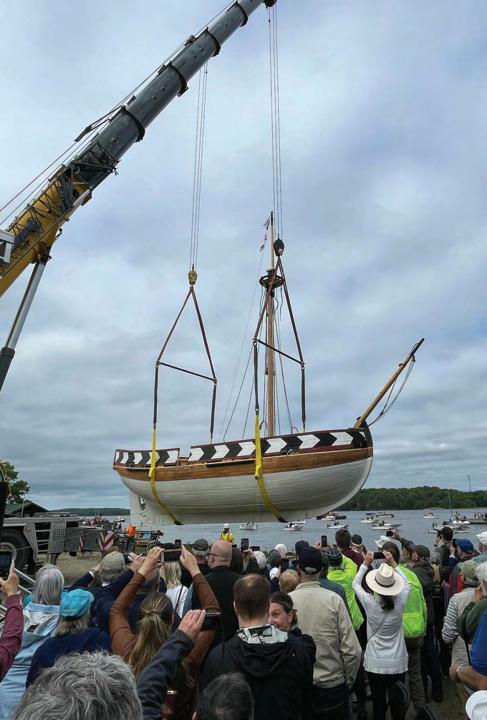
JLN: I started as the bosun on the Golden Hind in 1988, and was with her for a year. From there I went up and I worked on Lady Washington, which had just been completed. They had decided that the rigging they used in the original construction wasn’t sufficient. I was part of the re-rigging. We took the whole rig down to the lower masts and rebuilt everything and re-rigged it. So I was with Lady Washington for some time.
After that I went and sailed as third mate on board ‘HMS’ Rose, and I was with her for a few years. And then I decided that it would be easier to write about sailing than actually doing it! But I’ve kept my hand in over the years. I was a rigger on Godspeed, on Discovery — the Jamestown ships that were built here in Maine — and I’ve gotten out on ships whenever I was able.
MS: So how did you get involved in the Virginia project?
JLN: I had known about it for a long time, and followed it casually. As you know — as anyone who knows has been around these projects — a lot of these get started with great fanfare and then sort of fizzle out. I’ll be perfectly honest: I was very skeptical. I knew that the original board had folded up because they couldn’t raise the funds, and the second board had come together and decided that they were going to pick it up and do it. I just didn’t think they really had much of a chance.
So this was probably about 2016. I went down to look at the ship as it was being built there in Bath, and went into the boathouse, and I was just stunned. I couldn’t believe it: the ship was already up in frame and half the planking was on and they had this army of volunteers swarming over the thing, going at it. And I realized, wow, this is a real going concern! These guys are serious — they’re actually going to launch this ship.
And I thought, you know, if they launch this and I’m not a part of it, I’m gonna hate myself [laughs].
So I talked to Rob and Jeremy, and I told them, I’m not a shipwright, I don’t know much about that, but I’m a fairly experienced traditional rigger. And they said, wow! We have no one who knows anything about rigging [laughs]. They didn’t know how they were going to rig the ship once it was done. So they said, all right, you’re in charge!
So I immediately became lead rigger, and the only rigger for a while. We’ve since then got four or five other folks on the rigging gang. And we’ve been plugging away since then. We set up our rigging loft in the freight shed, right where the boat was being built. It’s a historic freight shed that was built in the late 19th century. A group of folks got together and restored the shed — it was a real wreck when Maine’s First Ship got started — but a group called the Bath Freight Shed Alliance came in and did an extraordinary job restoring it. It’s beautiful and authentic, it’s a great space, and it became the ship’s visitor center. And we set up our rigging loft in there.
So, for the past six years, the riggers and I have been plugging away in there, building the components of the rig, while the shipwrights were building the ship right next door.
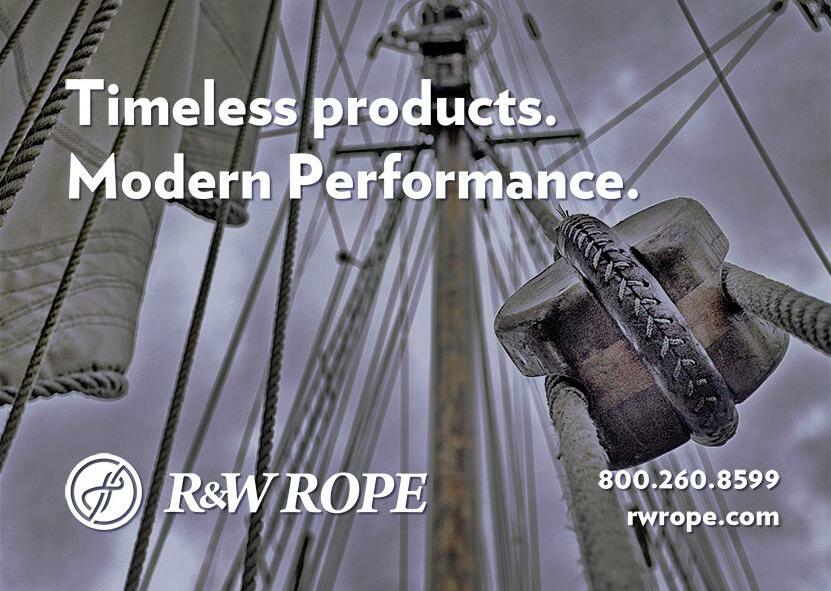
MS: Talk a little bit about that rig. I mean, it’s a pretty unique and old-school rig that Virginia carries.
JLN: It’s a very unusual rig! Even by standards of traditional sail. I guess you you’d call it a ketch. It’s got a main mast and the mizzen mast and the bowsprit; the bowsprit sets a square spritsail underneath it. There is a fore-and-aft jib. And then on the main mast there’s a square mainsail and a square topsail, but also a huge sprit mainsail, a fore-and-aft mainsail. And then on the mizzen, there’s a lateen.
This rig was based on various historical documents from the research that was done initially, prior to beginning construction. They had done a bunch of work in England and really dug into it.
Of course, they’re building a new Maryland Dove, and the Dove is about the same historical period as us. And it’s about the same size! And those guys did a huge amount of research. I was very impressed. They even went [to Sweden] and talked to the Vasa people and really dug into it. And the rig that they came up with is almost identical to the rig that we have. So that’s a nice confirmation of the authenticity of the rig.
MS: The rig they’ve designed for the new Dove is quite different than what the earlier iteration of the Dove had. The research that they’d done led to a real re-thinking of the rig.
JLN: That’s absolutely right. The original Dove was like a little Susan Constant or Mayflower sort of rig: very typical of what you would see on a larger ship of that era. I think their research, as did ours, led us to realize that a smaller vessel, like our pinnace, would carry a different rig than that. I’m eager to see the new Maryland Dove. I’m really eager to see her rig.
MS: She’s mostly rigged, as of this past weekend.
JLN: [Laughs] It’s amazing how fast you can do stuff when you pay people!
MS: Now that Virginia is afloat, tell us a little bit about the programs that Maine’s First Ship is going to be running on her.
JLN: Well, we’re in the early stages now of figuring that out. Certainly educational programming will be the backbone of what we do. We’re currently working with the Maine Maritime Museum, just a mile down the river, working on some of their summer camp programs, ways that we can work together on mutually beneficial programming.
We’re doing outreach to schools; our new executive director, Kirstie Truluck has got excellent contacts and has already really established herself in the local school systems, laying the groundwork for educational programming in the future.
We’ll certainly be trying to do port visits and that sort of thing. We’re hoping to get a Subchapter T certification so we’ll be able to take passengers on cruises and do sail training, probably with adults. The whole gamut of things that are so typical with these programs. We’ll try something and we’ll see what works, and if it doesn’t work, then we’ll try something else. And ultimately we’ll develop an educational and sail training program that’s appropriate for our location and our demographic here in Maine.
MS: Kirstie Truluck’s background is in education, so I imagine that’s exactly the kind of contribution that you were looking for from her. How have things changed since you put her in place and had a paid administrative staff as opposed to an all-volunteer organization?
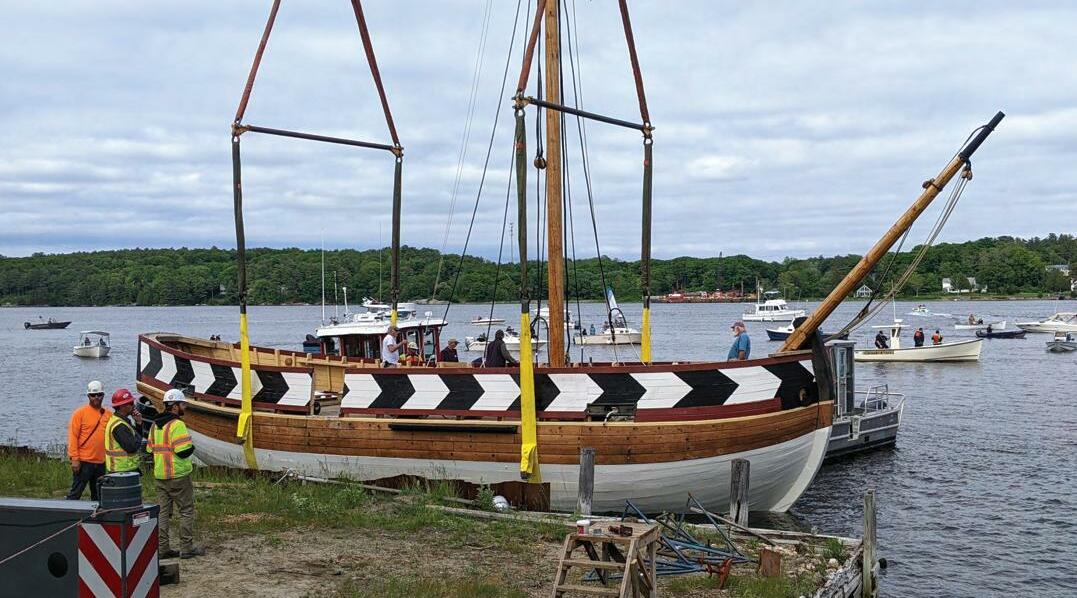
JLN: Kirstie has been terrific. Just looking at the kind of press coverage that we’ve had over the past few weeks, a lot of that has had to do with the outreach that she’s done. I think she’s been super and she’s been very active in talking with the local schools, making contacts and also doing outreach to the business community in Bath to make sure that we become an integral part of what’s going on in the Midcoast area.
It’s very easy for something like this to just sort of be a secret, you know, something that no one’s ever heard of, and she’s doing a really good job of making sure that that is not the case!
Right now, of course, our focus is completing the ship and getting the COI and so on. But I think she has already got her eye to the future, in terms of what kind of programming we’ll be doing and what kind of role the ship will fill.
MS: One of your projects earlier this spring was to construct a dock on the riverbank at which you can base Virginia. It strikes me as a challenging place to operate from.
JLN: Absolutely. One of our board members, Dan Wood, was instrumental in getting that dock together and did an excellent job. It went in a few weeks ago and it’s just beautiful. It had to extend out a bit from the shore, because at low tide, it’s pretty muddy there. And as I mentioned, there are a lot of old pilings from previous shipyards and wharves.
Yes, it will be a challenge. The current runs like crazy on the Kennebec. We made sure we had an appropriate-size engine, to deal with that.
One of the things we’re asking ourselves is to what extent are we going to be sailing just in the river, on Long Reach, which is what that section of the river is called, and how much will we actually be going out to sea. It’s a good 12 miles to open water. You can’t leave unless you’re on a falling tide, because you can’t buck that incoming tide efficiently — all considerations, for sure.
MS: You must be eagerly awaiting the Coast Guard’s long-overdue report on the knockdown of the Mary E last summer, which happened just downstream of your location.
JLN: We are very, very interested in seeing what happened. I know that she had passed a stability test not long before she went over. And I don’t think those were particularly harrowing conditions she was in when she went over. And as you say, she capsized in exactly the same waters that we’ll be sailing. So we really have a particular interest in knowing what happened.
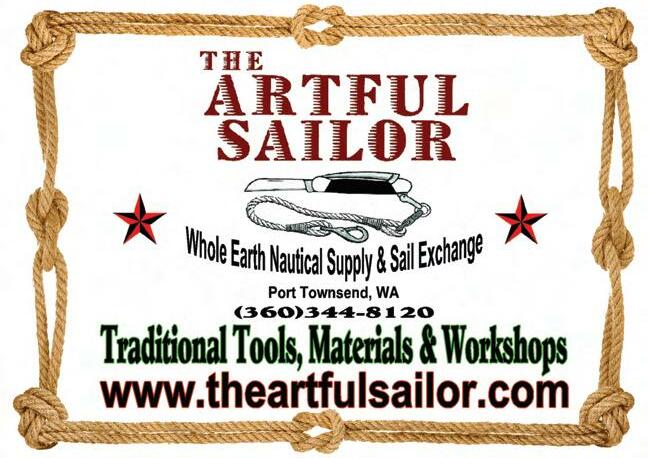
MS: Many of our readers know you as the author of numerous works of historical fiction and non-fiction, and particularly the Revolution at Sea novels. Any chance that you’ll be writing about the Popham Colony and the adventures of the original Virginia?
JLN: Um… possibly! [Laughs]
I’ve actually been kicking around the idea of a young adult novel about Popham for some time now. I have any number of people who are badgering me to do it. After all, one of our educational goals is to draw attention to the early colonial period in Maine, which people don’t know about. Virtually no one in Maine has ever heard of the Popham Colony! Having a good, exciting YA novel that we could put into schoolkids’ hands might be a really valuable thing.
See, now I’m getting all flashed up talking about it. So [laughs] I’ll have to start writing!
MS: Jim, tell me, is there anything that we missed? Then I can let you get back to the party.
JLN: Just that the ship will be at her dock all summer, being rigged and finished out. We have a visitor center, we have docents, we’re open most days to the public. So anyone who’s coming through Midcoast Maine should definitely make a point of stopping by to see Maine’s First Ship! ❂



